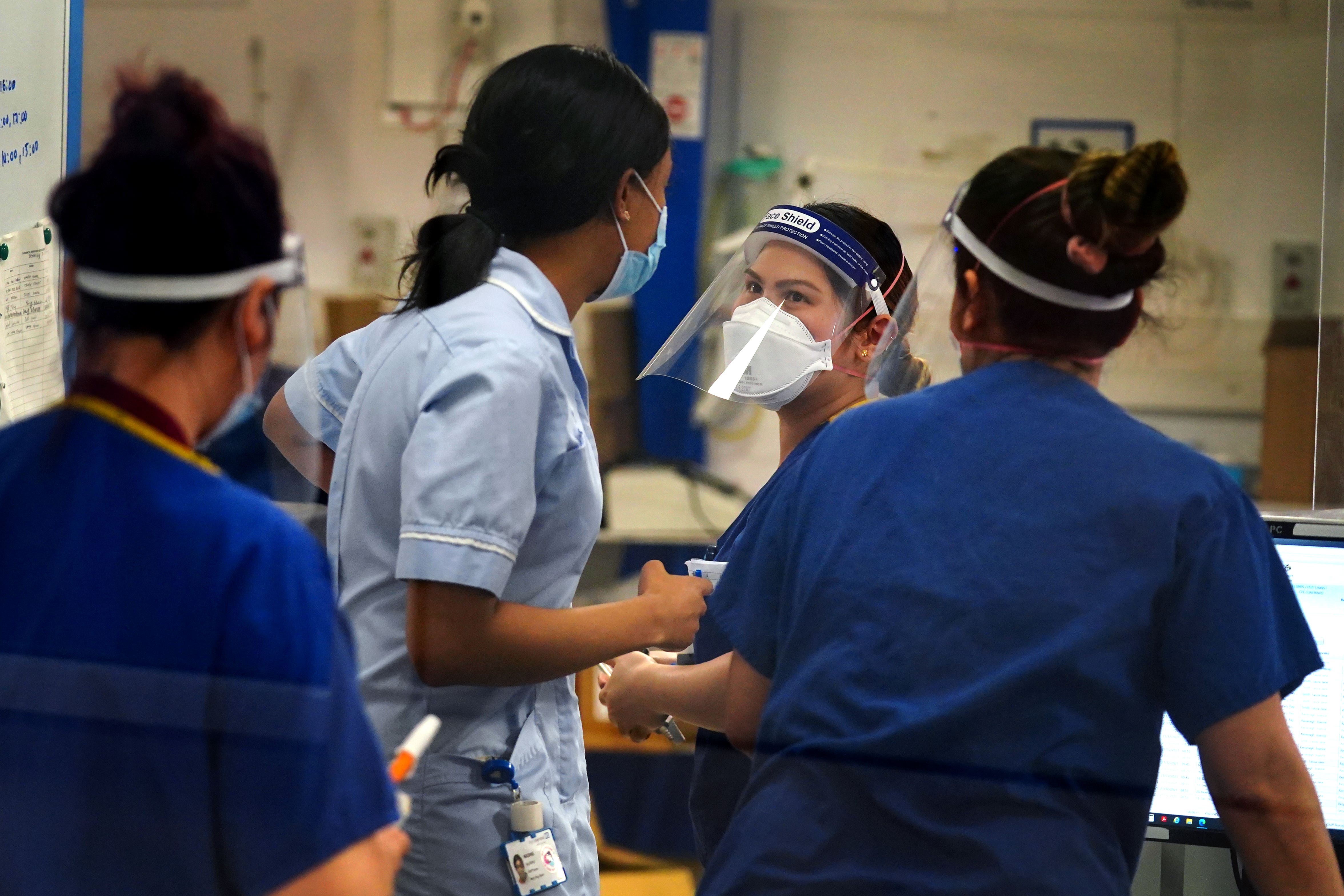NHS vacancies in England rise to new record high
NHS Digital figures show there were 133,446 full-time equivalent vacancies at the end of September

Your support helps us to tell the story
From reproductive rights to climate change to Big Tech, The Independent is on the ground when the story is developing. Whether it's investigating the financials of Elon Musk's pro-Trump PAC or producing our latest documentary, 'The A Word', which shines a light on the American women fighting for reproductive rights, we know how important it is to parse out the facts from the messaging.
At such a critical moment in US history, we need reporters on the ground. Your donation allows us to keep sending journalists to speak to both sides of the story.
The Independent is trusted by Americans across the entire political spectrum. And unlike many other quality news outlets, we choose not to lock Americans out of our reporting and analysis with paywalls. We believe quality journalism should be available to everyone, paid for by those who can afford it.
Your support makes all the difference.Vacancies across the NHS in England have risen to a new record high with more than 133,000 full-time equivalent (FTE) posts unfilled, new data shows.
There were 133,446 FTE vacancies across the health service at the end of September, up by 0.3 per cent from 133,104 at the end of June, according to new figures from NHS Digital.
It is the highest number of vacancies in records going back to June 2017, and up by 29 per cent year on year from the 103,809 vacancies reported at the end of September 2021.
The vacancy rate across the NHS in England – the number of vacancies as a proportion of planned staffing levels – stood at 9.7 per cent at the end of September 2022, the same as the previous quarter and the highest on record.
Vacancies across the NHS in England have been on a broadly upwards trend since March 2021, when the total stood at 76,082.
Performance figures show the NHS is struggling to cope with rising demand, with the number of patients waiting for routine hospital treatment at an all-time high and accident and emergency and the ambulance service failing to hit key waiting times targets.
Experts have said the staffing crisis is one of the key factors fuelling these issues and have repeatedly called for a long-term workforce plan to tackle the gaps.
Dr Latifa Patel, British Medical Association representative body chair, said the chancellor’s announcement in the autumn statement of a long-term workforce plan was an “encouraging step” to tackling staffing gaps.
But she added: “The persistent quarterly increase in unfilled NHS secondary care posts – which now stand at the highest number since June 2018, when the dataset began – is a clear sign that the government is nowhere close to getting a grip on the NHS workforce crisis.
“Persistent staffing shortages have led to punishing workloads for staff and growing waiting lists for patients, many of whom are facing agonising waits to get the care they need.
“The resulting rise in vacancies then forces remaining doctors to stretch themselves even more thinly, further fuelling the cycle of burnout and poor retention.
“When the NHS has been dealing with staffing shortages for as long as it has, there’s a danger that high vacancies come to be seen as inevitable and the norm. They are not inevitable, they mustn’t be accepted and they pose serious risks to patient safety and staff wellbeing.
“We will continue to see a haemorrhage of expert staff if no concrete action is taken to improve recruitment and retention.”
The highest number of vacancies were in London with 31,756 across acute, ambulance, community, mental health and specialist services – up by 3 per cent from 30,839 at the end of June.
The capital also had the highest vacancy rate at 12.9 per cent, with community and mental health services reporting the highest rates by sector – 16.6 per cent and 16.5 per cent respectively.
But while vacancies fell across five of the seven regions in England from the end of June to the end of September, year-on-year vacancies were up everywhere.
The highest number of vacancies across every region of England was in the acute sector, with more than 20,000 in London alone.
The new figures also show there were a record 47,496 FTE nursing vacancies in England at the end of September, representing a vacancy rate of 11.9 per cent – the same as the previous quarter and the joint highest level since 12.1 per cent in September 2019.
The vacancy rate for medical roles fell from 7.4 per cent at the end of June to 6.2 per cent at the end of September.
Across England, there were 9,053 FTE medical vacancies, with the Midlands region reporting the highest number at 2,059.
A Department of Health and Social Care spokesperson said the government was giving the NHS an extra £6.6bn and will publish a workforce strategy next year with independently verified forecasts for the number of doctors, nurses and other professionals that will be needed in five, 10 and 15 years.
She added: “There are record numbers of staff working for the NHS, including 9,300 more nurses and almost 4,000 more doctors compared with September 2021.
“The overall number of available posts is increasing as we expand services to bust the Covid backlogs and provide the best possible care to patients.”
Subscribe to Independent Premium to bookmark this article
Want to bookmark your favourite articles and stories to read or reference later? Start your Independent Premium subscription today.



